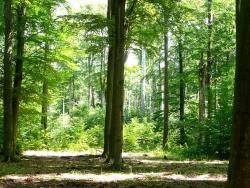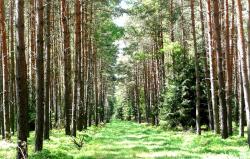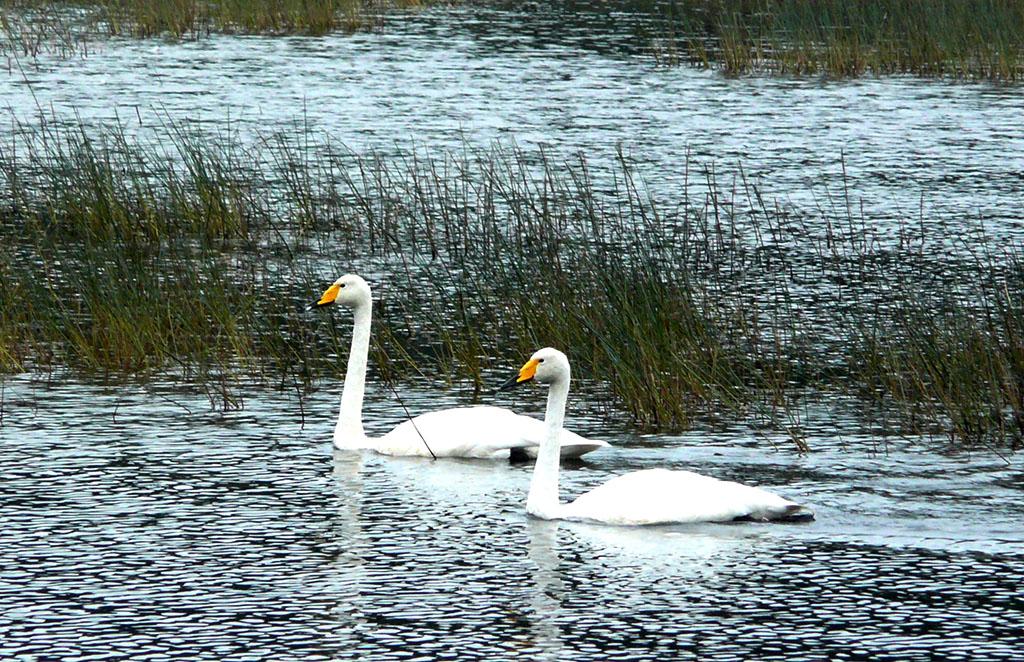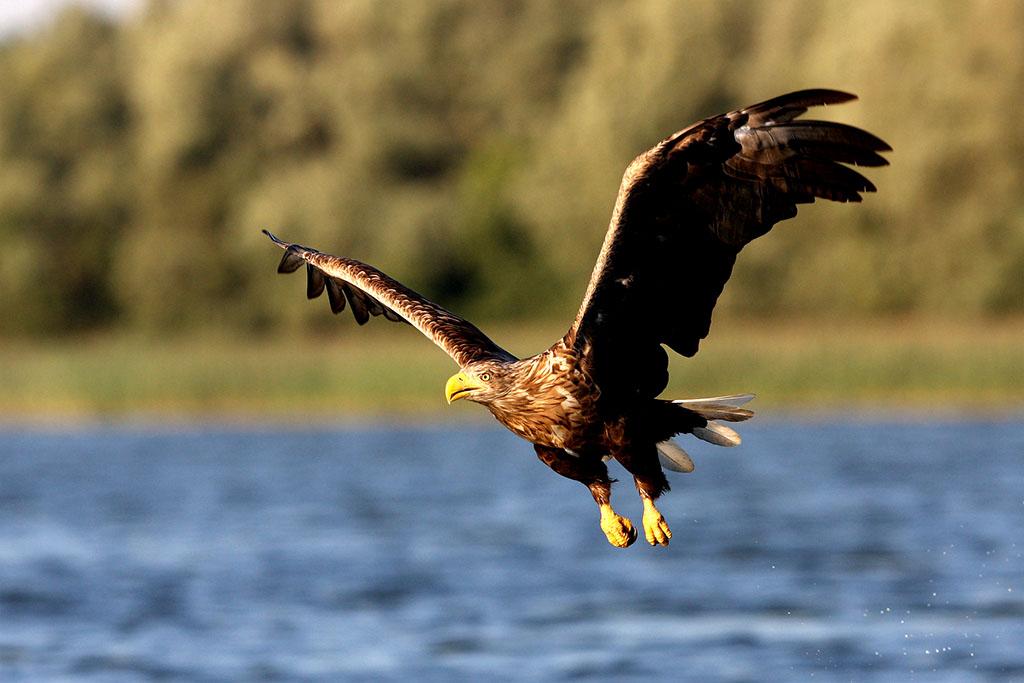 Asset Publisher
Asset Publisher
Polish forests
Poland is in the European lead, while concerning the area of all forests. They cover about 29,2 % of the country territory, and grow within the area of 9,1 million hectares. The overwhelming majority of the forests is state owned, of which almost 7,6 million hectares are managed by the State Forests National Forest Holding..
The number of Polish forest is still growing. The forestation rate of the country has increased from 21 % in 1945 to 29,2 % at the moment. Between 1995 and 2008, the forest area increased by 310 thousand ha. The basis for afforestation works is the "National Programme for Increasing the Forest Cover" (KPZL), assuming an increase of the forestation rate up to 30 % by 2020 and up to 33 % by 2050. Polish forests abound in flora, fauna and fungi. 65 % of the total number of animal species live there.
The forests grow in our country on poor soils, mainly because of the development of the agriculture in previous years. It influences the distribution of the types of the forest sites in Poland. Over 55 % of the forest areas is covered with coniferous forests. In other areas, there are forest sites, mainly the mixed ones. Their small part constitute alder and riparian forests – not more than 3 %.
In the years 1945 – 2011 the area of natural deciduous tree stands within the area of the State Forests National Forest Holding increased from 13 to 28,2 %.
Within the lowlands and uplands the most often occurring tee species is pine. It covers 64,3 % of the forest area of the State Forests National Forest Holding and 57,7 % of private and commune forests. In the mountains the predominant species is European spruce ( in the west) and European spruce with beech (in the east). Domination of pine is the result of carrying on sustainable forest management in the past. Once, the monocultures (crops or cultivations of one species) were the answer to the great demand of industry for wood. Such forests appeared to be quite fragile to climatic factors. They also were often the prey of pests' expansion.
In Polish forests, the share of other tree species, especially deciduous trees have been systematically increasing. The foresters have stepped aside from monocultures – that is why, they try to fit specific species of the forest stand to the natural stand, that would be proper for the given area. Thanks to that, in the years 1945 – 2011, the area of the deciduous tree stands within the lands of the State Forests National Forest Holding increased from 13 to 28,2 %. There occur more and more frequently the following tree species: oaks, ashes, maples, sycamore maples, elms, but also birches, beeches, alders, poplars, hornbeams, aspens, tilias and willows.
Our forests are the most often represented by the forest stands aged 40 to 80 years. The average age of the forest equals 60 years. More and more trees are of big size at the age over 80 years. Since the end of the Second World War, the forests' area has increased up to almost 1,85 million hectares.
Raport o stanie lasów w Polsce 2012
 Asset Publisher
Asset Publisher
 Asset Publisher
Asset Publisher
Forests of our Forest District
Forests of our Forest District
 Lasy Nadleśnictwa. Fot. Jerzy Wilanowski
Lasy Nadleśnictwa. Fot. Jerzy Wilanowski
 Piękne lasy Nadleśnictwa. Fot. Jerzy Wilanowski
Piękne lasy Nadleśnictwa. Fot. Jerzy Wilanowski
 Bór iglasty. Fot. Jerzy Wilanowski
Bór iglasty. Fot. Jerzy Wilanowski
 Rezerwat przyrody "Annabrzeskie Wąwozy". Fot. Jerzy Wilanowski
Rezerwat przyrody "Annabrzeskie Wąwozy". Fot. Jerzy Wilanowski
 Krajobraz leśny. Fot. Jerzy Wilanowski
Krajobraz leśny. Fot. Jerzy Wilanowski
Szprotawa Forest District Inspectorate includes two Sub-districts – Szprotawa and Małomice – and manages a total area of over 19 000 ha. Its share of forested areas is only 28.2% making it the lowest ratio in the entire Regional Directorate of the State Forests in Zielona Góra. Forests managed by the Inspectorate include forests maintained for industrial purposes, protected forests and reserves.
Landscape of the Forest District is very heterogeneous.The area of Szprotawa Sub-district and the southern part of Małomice Sub-district is quite monochromatic, whereas the northern part of Małomice Sub-district is known for its undulating landscape (end moraine) at places turning into hills.
Geological structure
The Forest District is located within the area of Middle Polish Glaciation, in Mazovia-Podlasie Stadial.It is dominated by geological deposits originating from the Tertiary and the Quaternary, such as:fluvioglacial sands and gravels, river sands and gravels and boulder clay and sand.
Types of forest habitats
Forest habitats of the Forest District consist mainly of mixed and coniferous forests, with a small share of riparian forests and alder forests.Pine is the most common tree and the entire forest ecosystem consists in 60% of this species.The second most common species is Oak followed by Alder.
Plants and animals
Forests of Szprotawa Forest District are home to a variety of plant and animal species, including those under strict and partial protection.There are over 20 protected plant and lichen species in the District, including:Common Cottongrass, Common Toothwort, Marsh Gentian, Purple Foxglove, Yellow Iris, Stiff Clubmoss or Usnea Filipendula.
Mammal species includeWild Boar, Roe Deer, Deer, Fox, Raccoon Dog, Badger, Marten and Hare.Forests of Szprotawa Forest District are also inhabited by rare invertebrate species, including 9 species included on the Polish Red List of Animals.The species are:Medicinal Leech, Great Capricorn Beetle and Lucanus Cervus.
Apart from the protected invertebrate species there is a large number of amphibian and reptile species.The most interesting species includeViviparous Lizard, Smooth Snake and European Tree Frog.
Birds inhabiting the district also include many rare and endangered species:Black Stork, Whooper Swan, Wood Sandpiper, Eurasian Pygmy Owl, Boreal Owl and the pride of the District – White-tailed Eagle.


 fot. Paweł Fabijański
fot. Paweł Fabijański
 fot. Paweł Fabijański
fot. Paweł Fabijański
 fot. Paweł Fabijański
fot. Paweł Fabijański






